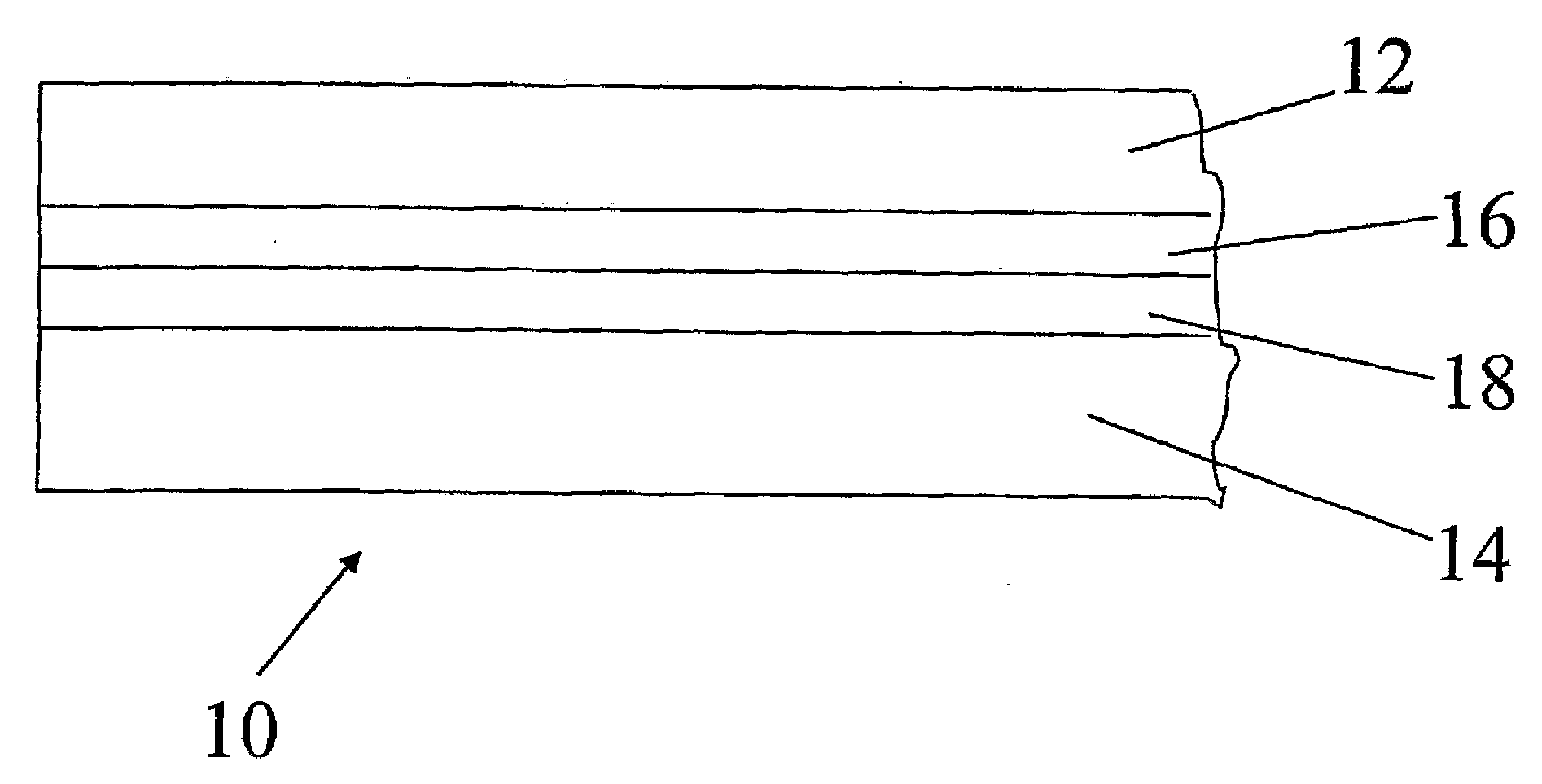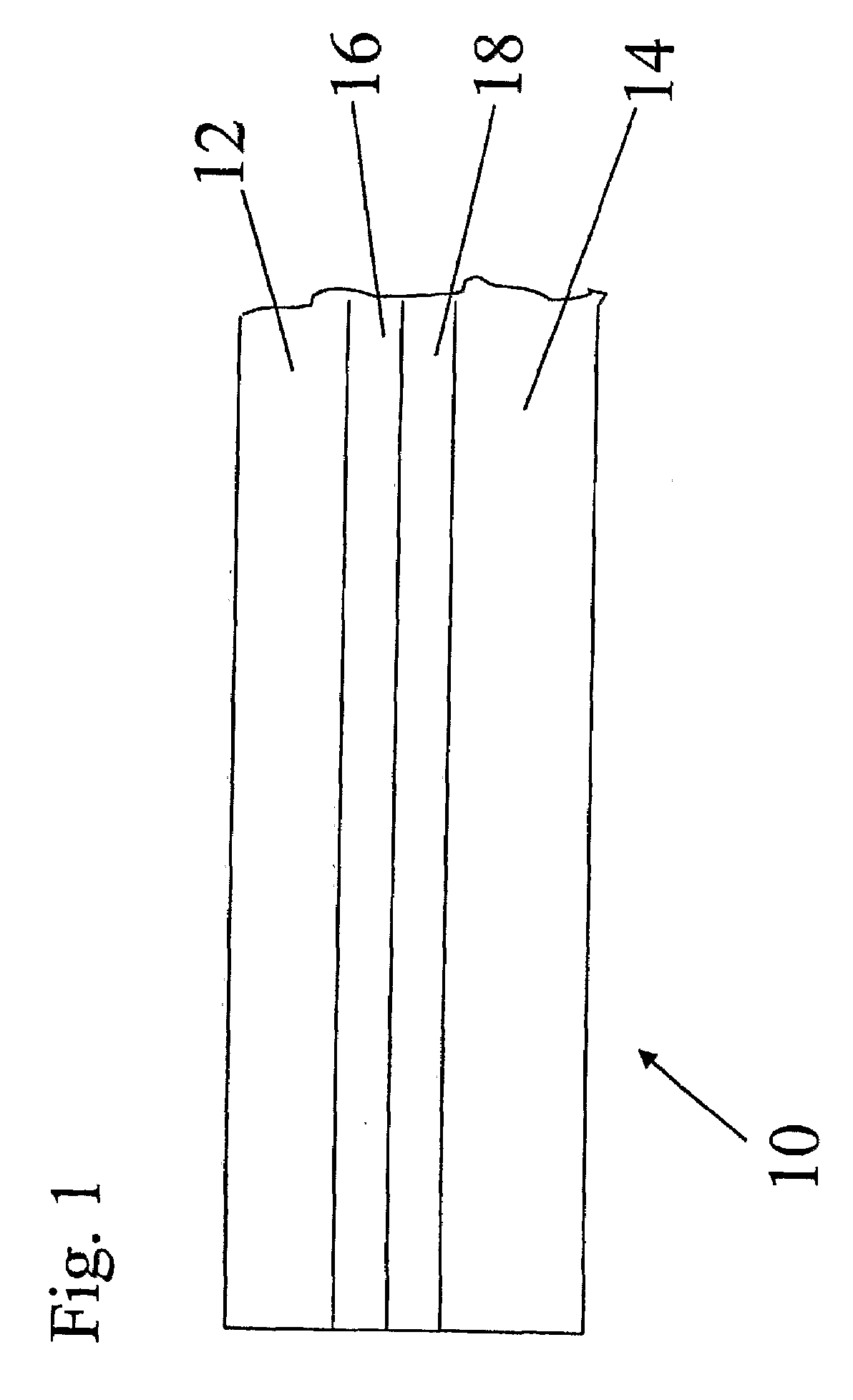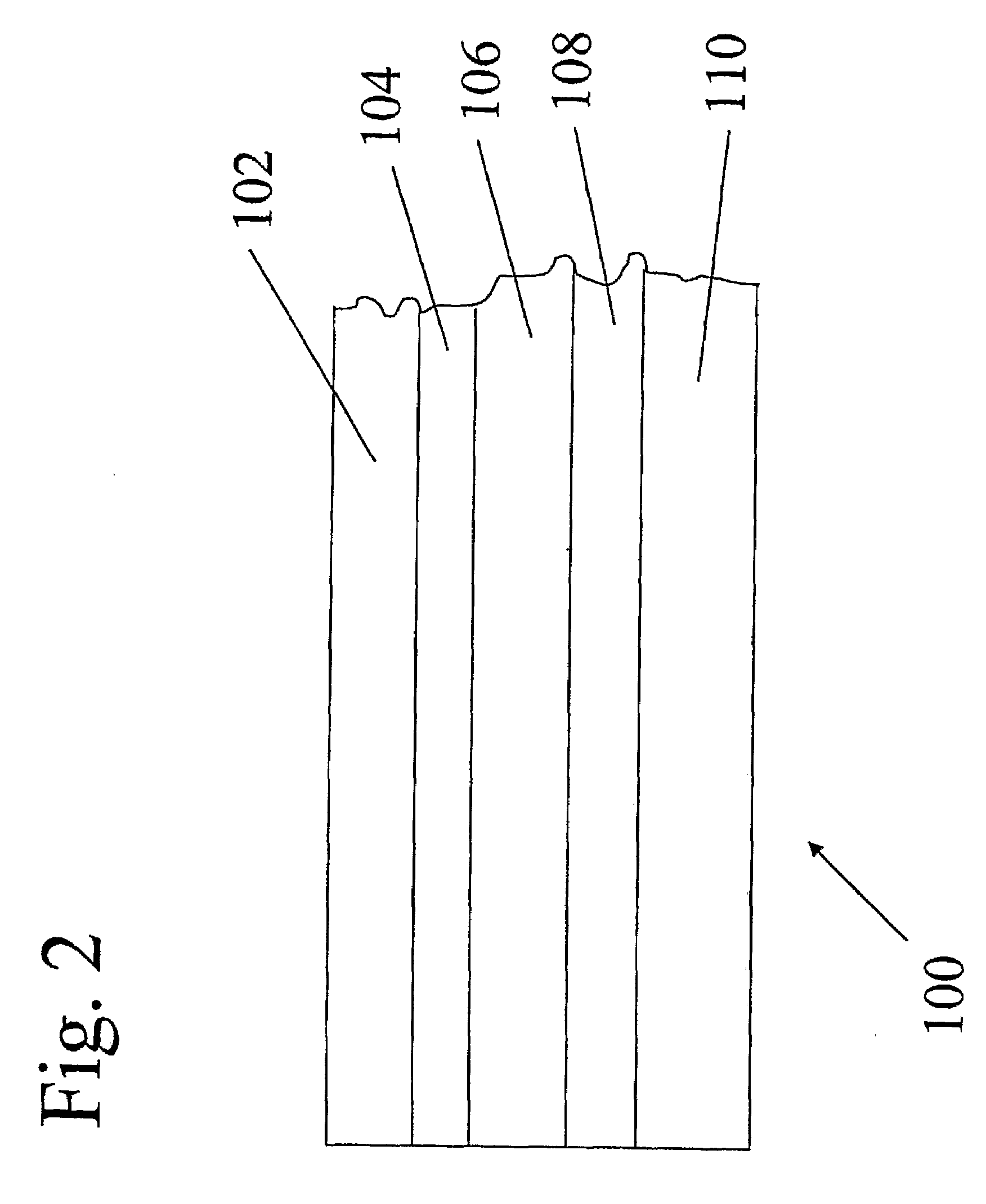Photochromic Laminate of Glass and Polyvinyl Butyral Resin
a polyvinyl butyral resin and photochromic technology, applied in the field of transparent or semi-transparent laminates, can solve the problems of tinted glass suffering from the disadvantage of constant tinting of the windows during both day and night, affecting visibility, and affecting visibility
- Summary
- Abstract
- Description
- Claims
- Application Information
AI Technical Summary
Problems solved by technology
Method used
Image
Examples
example 1
[0018]A first sheet of PVB is extruded with a normal automotive formulation containing uv absorbers that is approximately 6 inches by 54 inches and 0.0125 inches in thickness. A second sheet of 0.015 inch thick by 6 inches by 54 inches PVB is extruded with 0.004% by weight Corn Yellow photochromic dye from Keystone Aniline and 0.4% by weight irganox 1010.
[0019]The two sheets of PVB were laminated together to form one 0.030 inch thick sheet. When the side of the laminated PVB containing the photochromic molecule is exposed to uv light the PVB exhibits yellow color. If the uv light is allowed to radiate the side of the PVB that has the uv absorber in it, no activation of the photochromic dye is noted.
[0020]The PVB is then used to laminate two pates of glass together. When the side of the glass that has the photochromic side of the PVB laminated to it is exposed to uv light, it shows a yellow color.
example 2
[0021]Two sheets of PVB that are 0.015 inches thick are prepared. One of the sheets has uv absorbers in it and the second sheet does not contain uv absorbers. A film of PET is extruded with Palatinate Purple photochromic dye from Keystone Aniline. The PET sheet turns a blue color when exposed to uv light and turns transparent when the uv exposure is terminated.
[0022]The PET sheet is laminated between two sheets of PVB, one of which contains an uv absorber and the resulting laminate is then used to laminate two flat pieces of tempered glass. As in Example 1, the glass laminate changes color when the side of glass that has the PVB without uv absorber exposed to a uv light source.
example 3
[0023]A sheet of PVB that is 12 inches square is mad into a color changing laminate by spraying 50 cc of IPA onto one side of it. The 50 cc of IPA contains 25 mg. of Berry Red photochromic dye dissolved therein. The photochromic treated PVB is then laminated between two pieces of tempered glass using a normal laminating cycle. The result is an assembly that exhibits a color change when the side of the glass that has the PVB with photochromic dye sprayed onto it is exposed to uv light.
PUM
| Property | Measurement | Unit |
|---|---|---|
| Photochromic | aaaaa | aaaaa |
Abstract
Description
Claims
Application Information
 Login to View More
Login to View More - R&D
- Intellectual Property
- Life Sciences
- Materials
- Tech Scout
- Unparalleled Data Quality
- Higher Quality Content
- 60% Fewer Hallucinations
Browse by: Latest US Patents, China's latest patents, Technical Efficacy Thesaurus, Application Domain, Technology Topic, Popular Technical Reports.
© 2025 PatSnap. All rights reserved.Legal|Privacy policy|Modern Slavery Act Transparency Statement|Sitemap|About US| Contact US: help@patsnap.com



